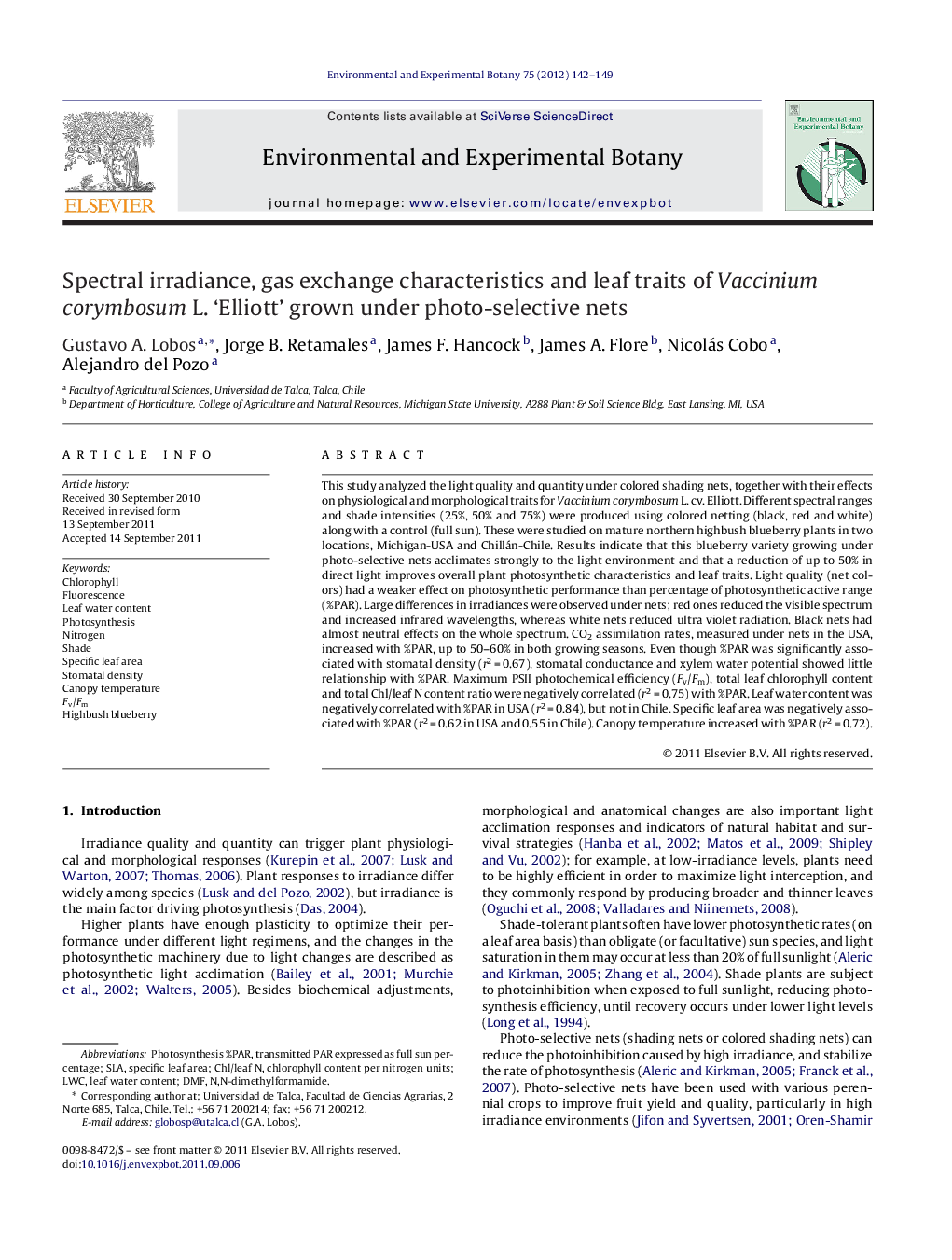| Article ID | Journal | Published Year | Pages | File Type |
|---|---|---|---|---|
| 4554843 | Environmental and Experimental Botany | 2012 | 8 Pages |
This study analyzed the light quality and quantity under colored shading nets, together with their effects on physiological and morphological traits for Vaccinium corymbosum L. cv. Elliott. Different spectral ranges and shade intensities (25%, 50% and 75%) were produced using colored netting (black, red and white) along with a control (full sun). These were studied on mature northern highbush blueberry plants in two locations, Michigan-USA and Chillán-Chile. Results indicate that this blueberry variety growing under photo-selective nets acclimates strongly to the light environment and that a reduction of up to 50% in direct light improves overall plant photosynthetic characteristics and leaf traits. Light quality (net colors) had a weaker effect on photosynthetic performance than percentage of photosynthetic active range (%PAR). Large differences in irradiances were observed under nets; red ones reduced the visible spectrum and increased infrared wavelengths, whereas white nets reduced ultra violet radiation. Black nets had almost neutral effects on the whole spectrum. CO2 assimilation rates, measured under nets in the USA, increased with %PAR, up to 50–60% in both growing seasons. Even though %PAR was significantly associated with stomatal density (r2 = 0.67), stomatal conductance and xylem water potential showed little relationship with %PAR. Maximum PSII photochemical efficiency (Fv/Fm), total leaf chlorophyll content and total Chl/leaf N content ratio were negatively correlated (r2 = 0.75) with %PAR. Leaf water content was negatively correlated with %PAR in USA (r2 = 0.84), but not in Chile. Specific leaf area was negatively associated with %PAR (r2 = 0.62 in USA and 0.55 in Chile). Canopy temperature increased with %PAR (r2 = 0.72).
► Blueberry growing under shading nets acclimates strongly to the light environment. ► Light quality (net color) had a weaker effect on photosynthetic performance than PAR. ► Red reduced visible spectrum and increased infrared, white reduced ultra violet. ► Stomatal conductance and xylem water potential showed little relationship with PAR. ► Canopy temperature increased with %PAR.
